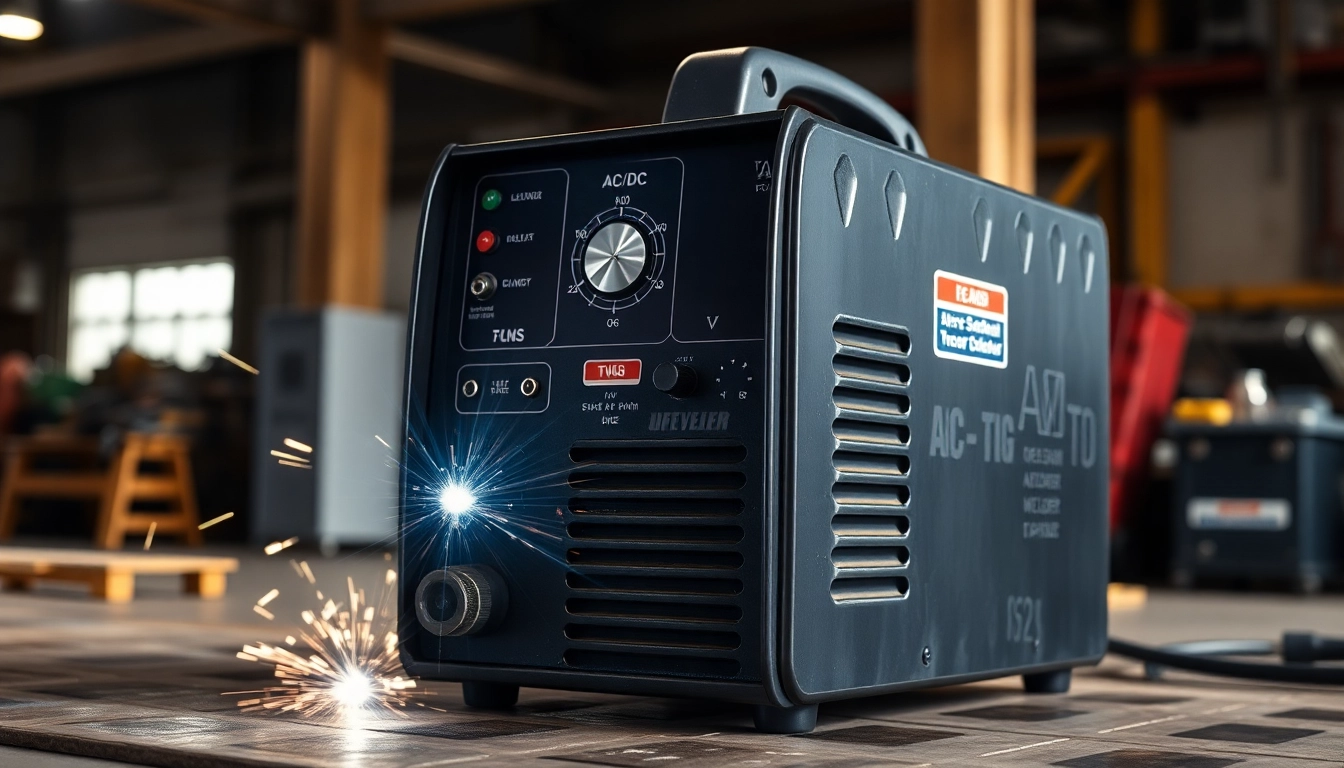Understanding AC DC TIG Welders
Tungsten Inert Gas (TIG) welding, recognized for its precision and versatility, has become an essential technique in metalworking. Among the myriad of welding methods available, the AC DC TIG welder stands out for its capability to weld different materials effectively. For anyone venturing into welding, understanding this type of welder is paramount. Whether you’re looking to perform intricate welds on aluminum or prefer stainless steel applications, ac dc tig welder technology provides the tools to meet varying requirements.
What is an AC DC TIG Welder?
An AC DC TIG welder is a versatile welding machine capable of switching between alternating current (AC) and direct current (DC). This fundamental feature allows welders to tackle a wider range of materials with exceptional precision. AC is particularly advantageous for welding aluminum and magnesium as it helps in breaking down surface oxides and generating a clean weld pool. In contrast, DC is suited for welding ferrous metals such as steel and stainless steel, providing deeper penetration and a stable arc.
Advantages of Using AC DC TIG Welders
The benefits of using AC DC TIG welders are numerous and can significantly enhance your welding projects. Here are some key advantages:
- Versatility: The ability to switch between AC and DC allows for broader applications, catering to various materials.
- Precision Control: TIG welding provides a high level of control over the weld pool, leading to clean and precise welds.
- Minimized Defects: TIG welding reduces the likelihood of inclusions and defects that can compromise weld integrity.
- Clean Heat Input: The process allows for lower heat input, which is crucial for thin materials.
Applications for AC DC TIG Welding
AC DC TIG welding finds applications in diverse industries. Some prominent fields include:
- Aerospace: Used for assembling airplane components where quality and structural integrity is paramount.
- Automotive: Vital in manufacturing and repairing lightweight aluminum automotive parts.
- Manufacturing: Utilized in producing high-quality furniture and appliances, particularly for stainless steel constructions.
- Pipe Welding: Effective in joining different grades of pipes, especially in construction and oil & gas sectors.
Key Features to Consider
Power Ratings and Duty Cycle
When selecting an AC DC TIG welder, understanding power ratings and duty cycle is critical. Power ratings, measured in amps, determine the strength of the machine and its ability to work with different material thicknesses. Duty cycle, defined as the duration a welder can operate before requiring a cooldown, is usually expressed as a percentage. A higher duty cycle allows for longer periods of work, which is essential for heavy fabrication projects.
Portability and Size
For many welders, the portability of their equipment is vital, especially for those working in various locations. Compact, lighter models, while less powerful, can provide significant mobility advantage. However, larger units may offer more robust features and higher output but are less suited for transport. Consider your work context when evaluating the size and weight of an AC DC TIG welder.
Advanced Features: Pulse and HF Start
Advanced functionalities such as pulse frequency control and high-frequency (HF) start can greatly improve welding efficiency and quality:
- Pulse Frequency Control: This feature allows welders to control heat input and penetration by alternating between high and low amperage, which can reduce distortion and improve the overall quality of the weld.
- High-Frequency Start: This ensures a stable arc starts without contact, preventing wear on the tungsten and leading to cleaner starts.
Popular Brands and Models
Top AC DC TIG Welders in 2023
As of 2023, several brands offer standout AC DC TIG welders that cater to a range of budgets and applications. Here’s a look at a few leading options:
- Everlast PowerTIG 200DV: Famous for its affordability and high-quality output, making it ideal for both beginners and professionals.
- Weldpro 200 Amp AC/DC TIG Welder: Recognized for its dual voltage capability and high-frequency start feature, lending versatility across various materials.
- PrimeWeld 225X: Favored for its portability, robust build, and multiple features, including pulse capabilities.
Comparative Analysis of Popular Brands
When comparing brands, consider factors such as customer service, warranty, and access to replacement parts. Brands like Miller Electric and Lincoln Electric are recognized for their reliability and extensive service networks, while newer brands like PrimeWeld and YesWelder offer competitive pricing with good functionalities aimed at the home welder and small businesses.
User Reviews and Recommendations
User feedback is invaluable when selecting a welder. Many users recommend looking for models that offer good customer service, ease of use, and effective troubleshooting resources. Reading through reviews helps gauge the real-world performance and reliability of AC DC TIG welders.
Buying Guide for AC DC TIG Welders
Where to Purchase an AC DC TIG Welder
Welders can be purchased through various channels:
- Local Retailers: Visiting a local welding supply store allows you to see the machines upfront and ask questions.
- Online Stores: Websites like Amazon, Home Depot, and specialized welding stores provide a range of options and user reviews.
- Directly from Manufacturers: Buying directly from brands can often provide the best warranties and support options.
Pricing Considerations
The price of AC DC TIG welders can vary significantly based on power, features, and brand reputation. Entry-level models start around $500, while professional-grade units can exceed $5,000. It is important to match the budget with the intended level of use—hobbyists may not need to invest in high-end models, while professionals should ensure they have robust and reliable equipment.
Warranty and Customer Support
When investing in a welder, warranty and customer support are critical. Look for brands that offer at least a one-year warranty. Strong customer support can help troubleshoot issues and assist with replacement parts, ensuring less downtime. Read reviews regarding customer experiences with service departments before making a decision.
Best Practices in Using AC DC TIG Welders
Essential Safety Guidelines for Welding
Safety cannot be overstated in welding. It is crucial to adhere to essential safety guidelines:
- Personal Protective Equipment (PPE): Always wear appropriate PPE, including gloves, helmets with tinted visors, and protective clothing.
- Ventilation: Ensure there is adequate ventilation when welding to avoid inhaling toxic fumes.
- Fire Safety: Have a fire extinguisher nearby and ensure your work environment is free from flammable materials.
Maintaining Your AC DC TIG Welder
A well-maintained AC DC TIG welder can last many years. Regular maintenance includes:
- Cleaning and inspecting the TIG torch and components for wear and damage.
- Checking the gas connections and ensuring no leaks are present.
- Regularly replacing the tungsten electrode and cleaning the work area to ensure optimal performance.
Improving Your Welding Techniques
Lastly, honing your welding skills can significantly affect the results. Consider the following tips:
- Practice: Regular practice on scrap metal helps improve technique.
- Seek Feedback: Engage with more experienced welders who may provide insights and tips.
- Continual Learning: Attend workshops or online courses to learn new techniques and get accustomed to different materials.



